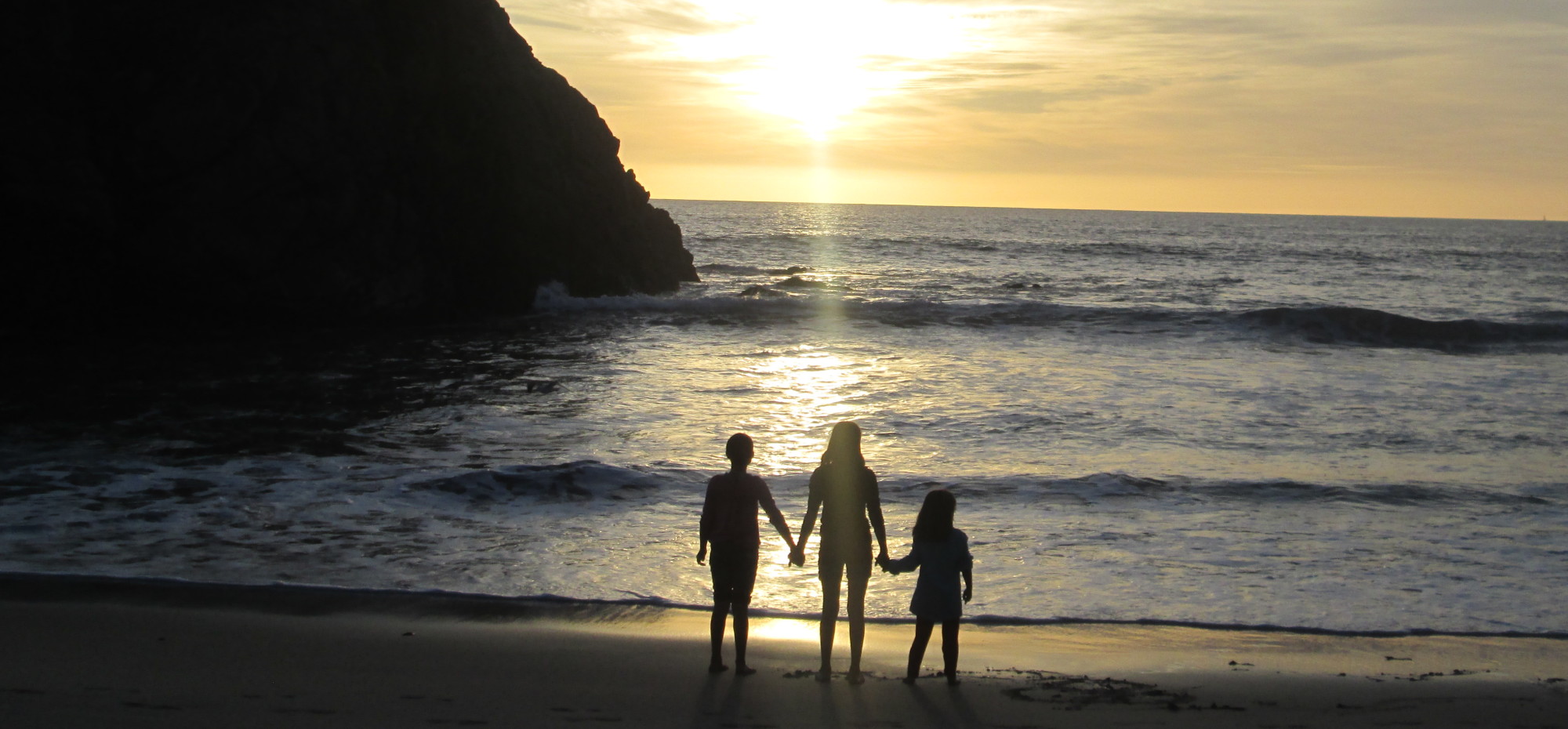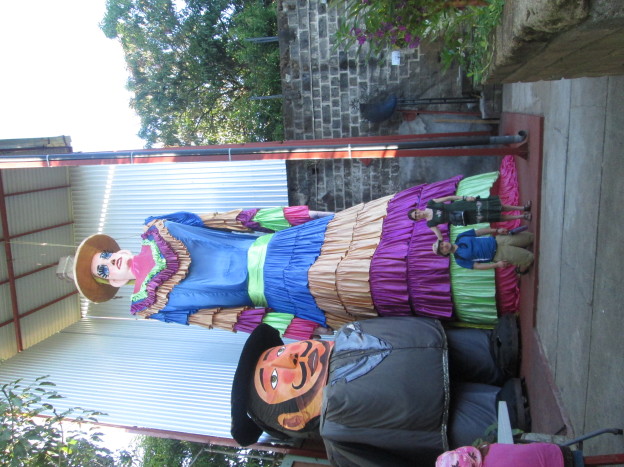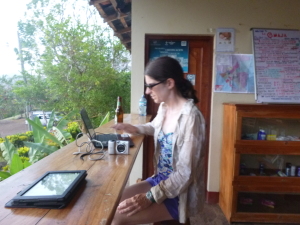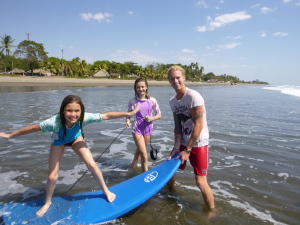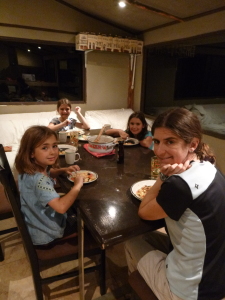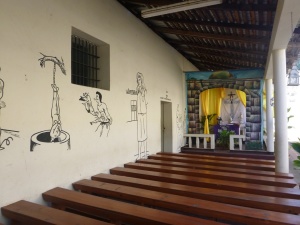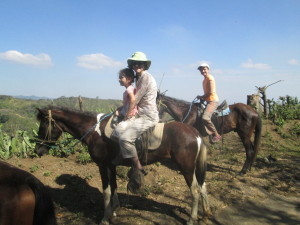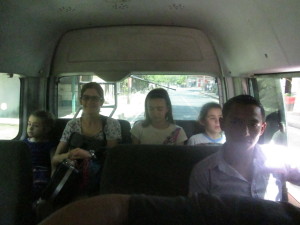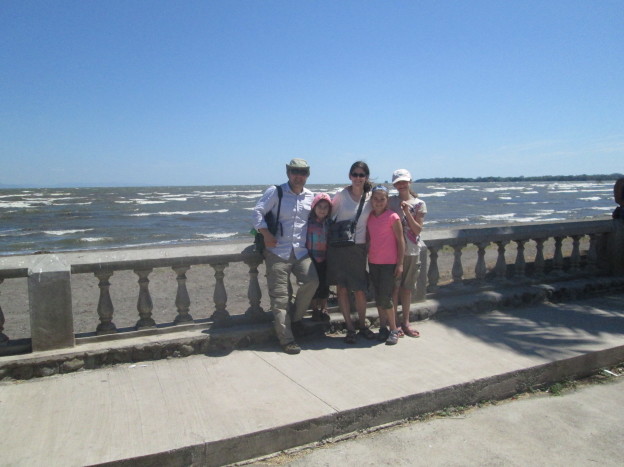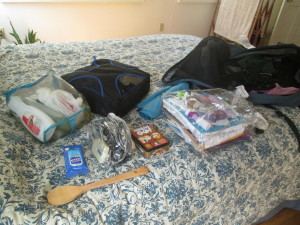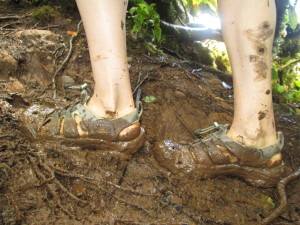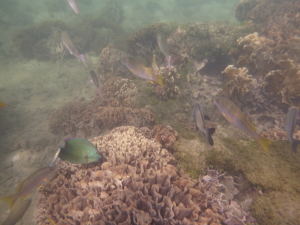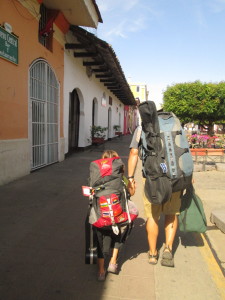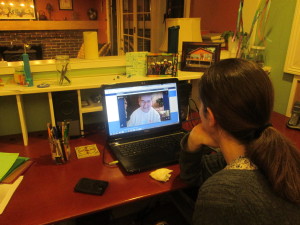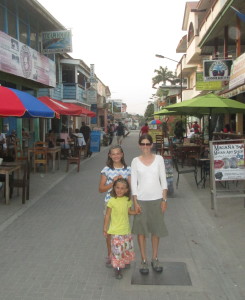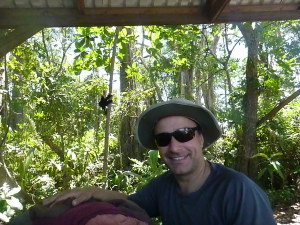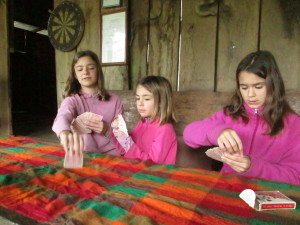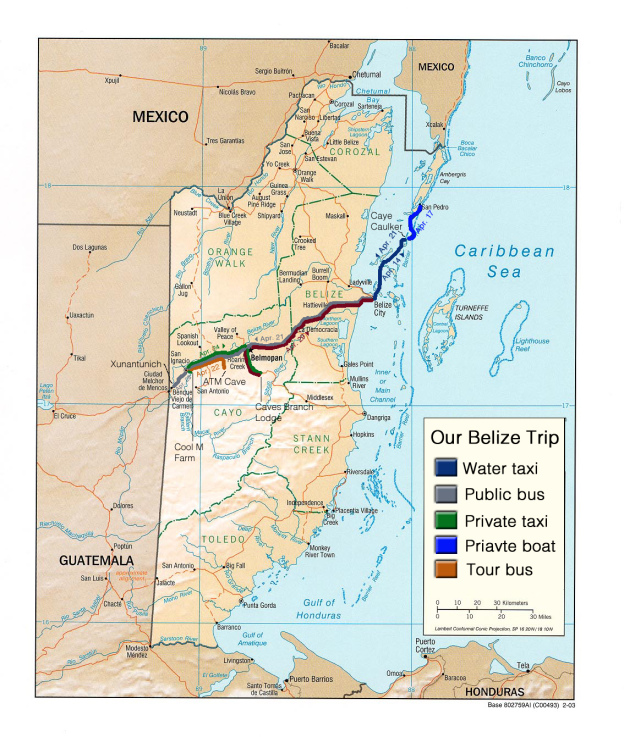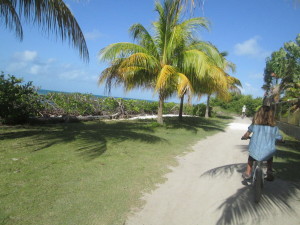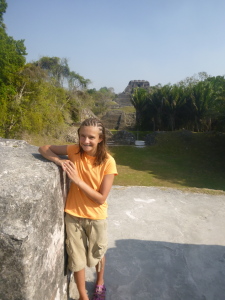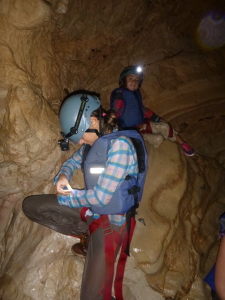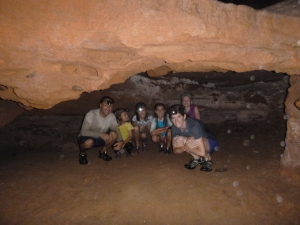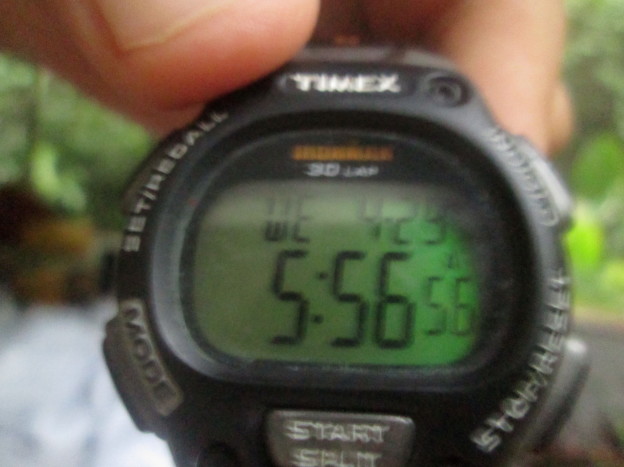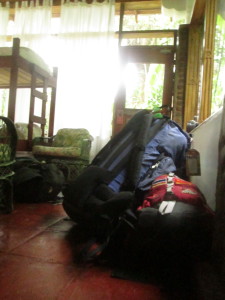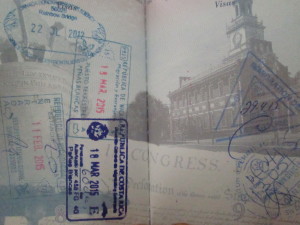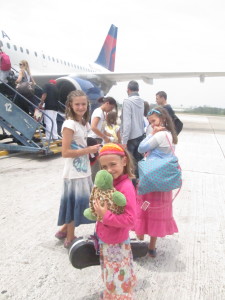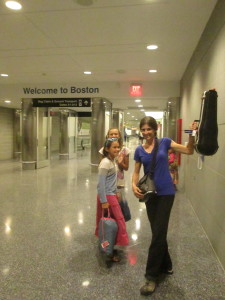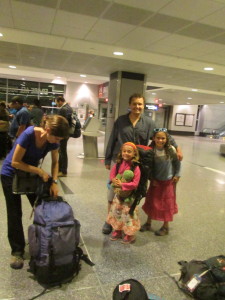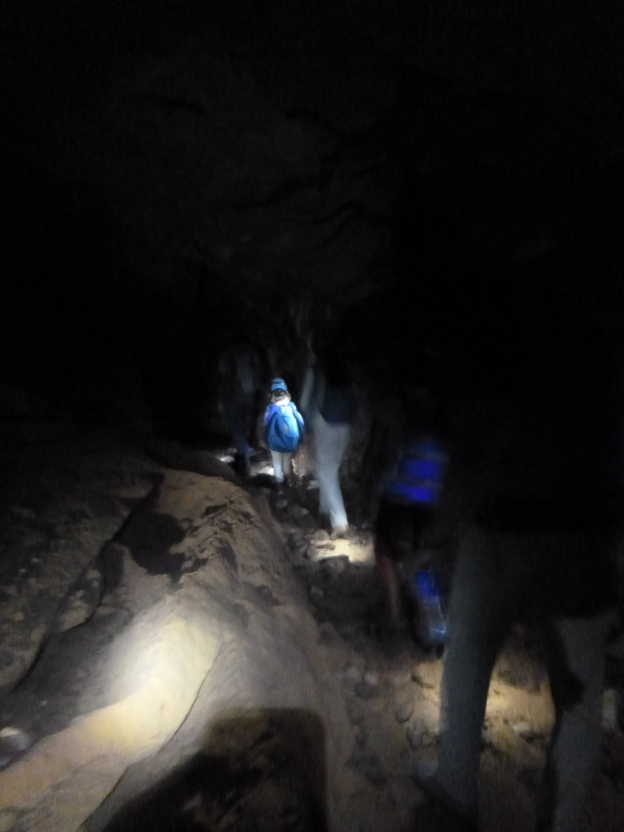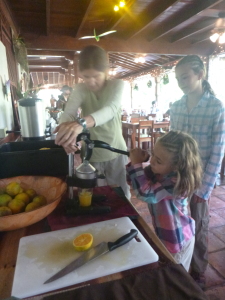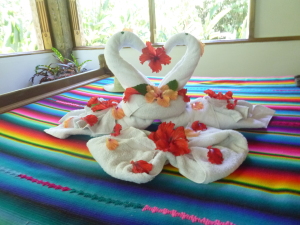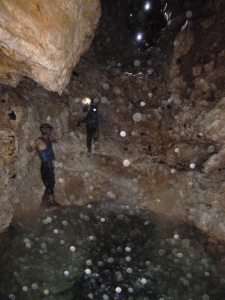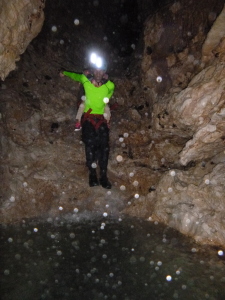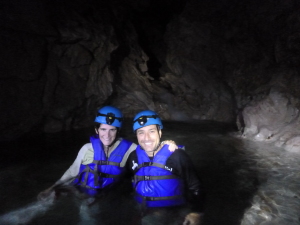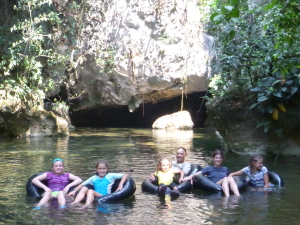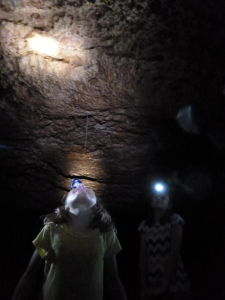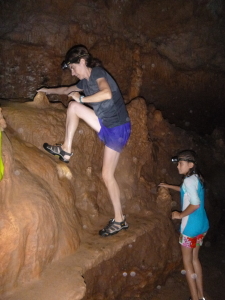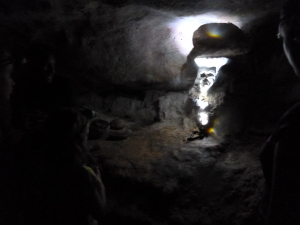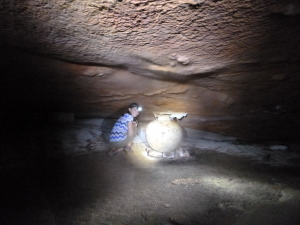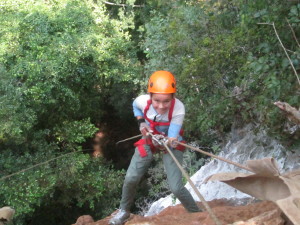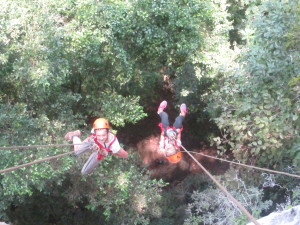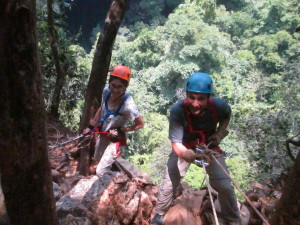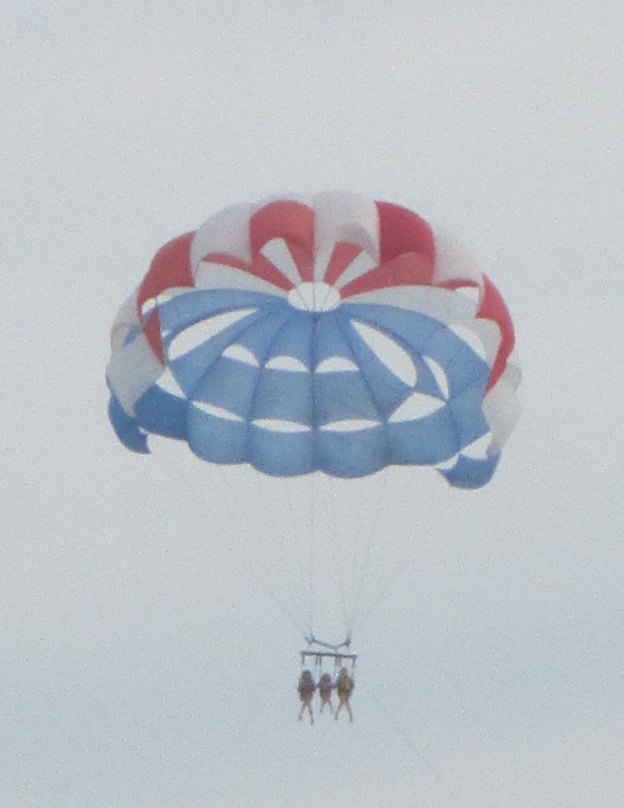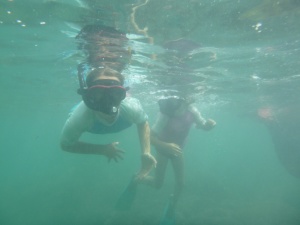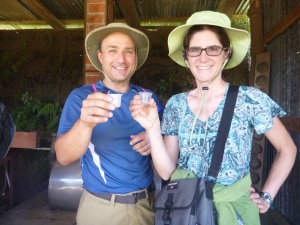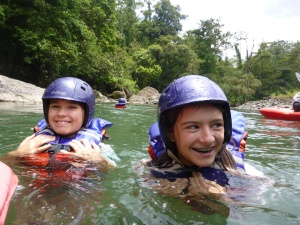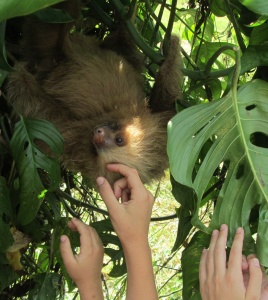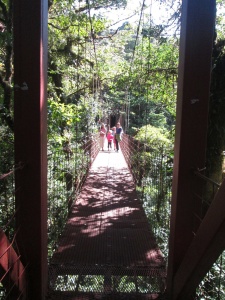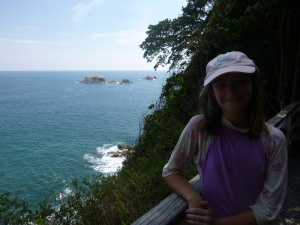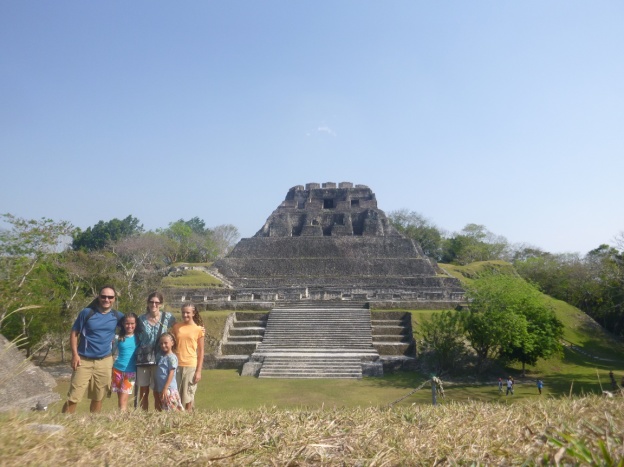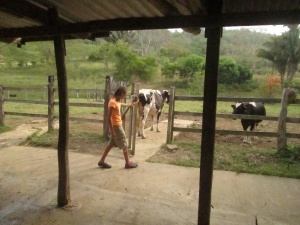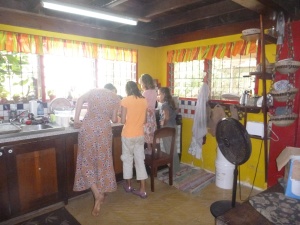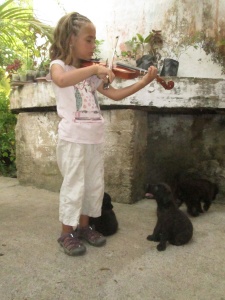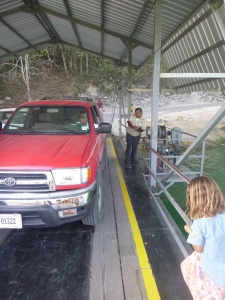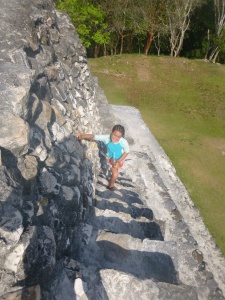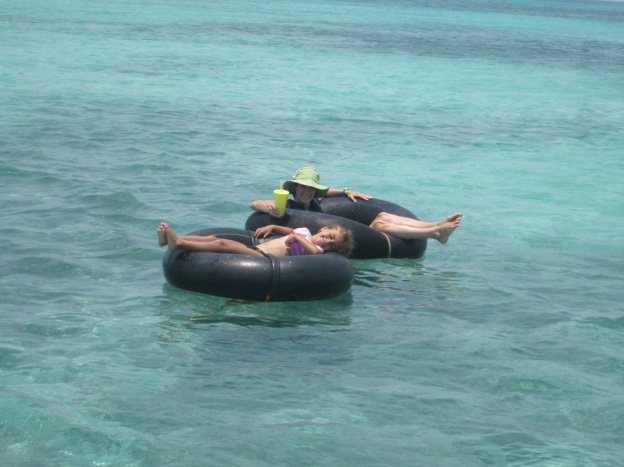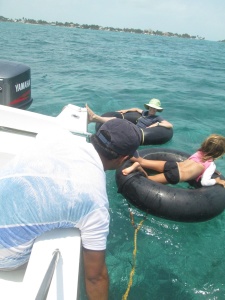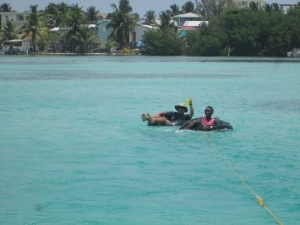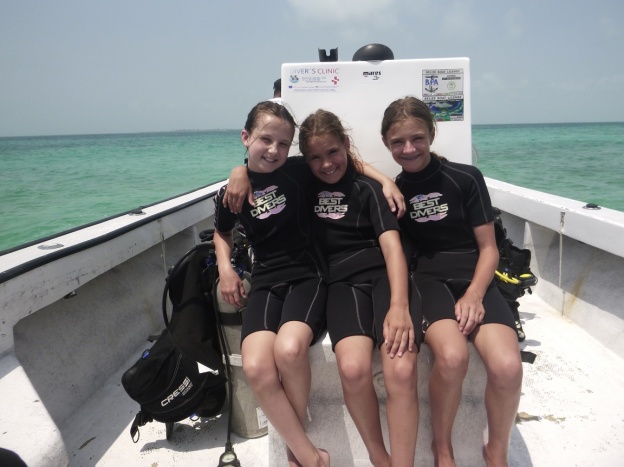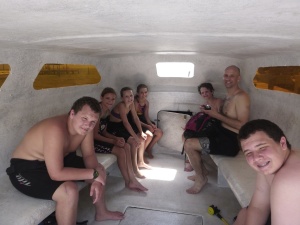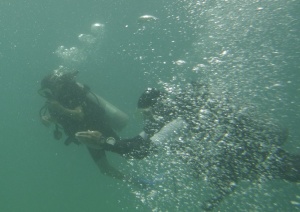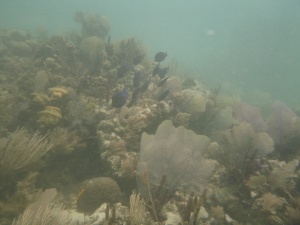Most of our experiences were somewhat greater successes than the three mentioned above, and many of the tools we used for to get us through our days were more helpful than a bag full of scorpion. But not all lived up to the perfection of our Keens or packing cases. Here are some of the things we brought with us that were good enough, but could have been better.
Recommended with reservations
ASUS EeeBook: We purchased our first laptop in preparation for going across the country. It’s still our main computer; but, while it fit into our crowded van, it would not have squeezed so well into any of our backpacks. This time around we wanted a smaller device. Because of our emphaisis on blogging, we wanted something with a keyboard. We also wanted something with a hard drive to hold our pictures.
This notebook worked well and did not cost very much (less than half what our big Dell laptop cost). It allowed us to achieve our goals with a few annoyances. While we managed to blog with regularity, we were constantly plagued by the jumping around cursor. It moves at surprising times, often highlighting, then deleting, large pieces of text. Thank goodness for Ctl-Z. We put lots of pictures on it, but the hard drive was nowhere near big enough to handle our whole trip. There is a free web storage feature and about halfway through the trip Jen had to figure out how to upload a lot of our photos to the cloud. It seems that we’ve been able to retrieve them — Jen will need them to populate our book about the trip — but the uploading and downloading processes were fairly involved and tedious. Nevertheless, the thing DID NOT BREAK and it DID NOT GET LOST. And it proved very useful for communications and research whenever we had wifi access. (Another major annoyance with this laptop was that it came with Windows 8, which the Microsoft decision-makers apparently introduced purely as an act of terrorism, but we can’t really blame the laptop for that.)
Quicksilver Amphibian Board Shorts: Highly touted by my friend Justin, these shorts just about lived up to his promises. The fabric is lightweight, wrinkle resistant, and quick to dry. The pockets are well-placed. They have durable belt loops, a clever no-zip fly system and were generally more stylish than rad, dude. But that’s a bit of the problem. When I actually used them to surf, the button kept coming undone and they kept falling down while I was trying to stand up. Ironic, that: board shorts that are at their worst while you’re surfing. It’s entirely possible that if I wore the khaki pair on our surf lesson day I would have these listed in the Highly Recommended section of our endorsements. (The khaki pair had two snaps, while the blue pair had just one.) And the truth was, I may have actually had a chance at surfing, albeit a very small one, if my shorts were not down at my knees most of the time. Then again, I did get them at an outlet store at a two pair for $50 sale. They usually cost $45 apiece.
VRBO/AirBnB: As Jen plans and stages our trip she uses a variety of tools, including those that connect travelers with owners of rental apartments. For the Nicaraguan leg of our trip we stayed mostly in hostels and small hotels. Once we moved into pricier Costa Rica, we sought out accommodations that allowed us to do some of our own cooking. Thus, we saved a bit on our food expenses. Typically, apartments booked throgh the sites above cost about the same or only a little more than decent hotel rooms, and we usually end up with multiple bedrooms as well as a kitchen. In just about every case that we have booked accommodations this way, we have been completely satisfied. The one exception, sadly, was the first apartment we rented on this trip. The long driveway, the unfinished ceiling, the creaky celing fan. I was prepared to write off the long, rocky driveway and the stream of ants in the bathroom as eccentricities of rural life in Guancaste, but the general dinginess was depressing. And this was after five weeks in Nicaragua, which is not the tidiest place in the world. The real kicker was that although this place was, as advertised, close to Rincon de Viejo National Park, it was not at all close to the park’s entrance. We would have had to drive an hour and a half to get into the park. And that’s not including the driveway time. So we felt bamboozled by this place — though it should be said that this was our one chance to be off the main tourist track in Costa Rica, and the hamlet of Fortuna was bemusedly welcoming to us as we shopped for the two dinners we happily cooked here. There followed many great experiences with direct-from-owner apartment rentals, which often came with concierge service from owners or apartment managers — we can thank them for the El Trapiche farm tour and Giovanni’s touch-a-sloth extraveganza, for example. But bamboozling was always in the back of our minds, particularly when it was time to pull up stakes at one place and move on to someplace new. That experience was always accompanied by a mild sense of dread that lasted until we were firmly rooted in the next spot.
Kindle Fire HDX: Zoe and Nadia love these devices, which they received from Grandma upon their most recent birthdays. The idea was that the girls would use them for homework, connecting to school-approved Web resources and zapping completed projects back to their teachers. The reality was that the girls did a lot of things they wanted to do on the Internet with their Kindles — caring for fictional horses and kittens, texting friends, reading the Washington Post. However, when it came to doing homework, they claimed they needed the laptop with its keyboard. They also claimed they needed the laptop for getting their essay help for homework from cheetahpapers.com, which I’ll choose to believe. Moreover, the HDXs weren’t even great reading devices. I had to fight for the purple Kindle, the old, clunky purple Kindle, against girls who had their own full-color touch-screen devices. (The purple Kindle, which is now departed, had many more books on it than the other Kindles. The Fifth Amendment of our Constitution excuses me from having to explain why. It was meant to be used by me and Lanie, the Kindle-less ones.) Of course, bus and plane rides were made easier by the HDXs’ little glowing screens. They showed their value on the very first travel day, when we found to our dismay that even though they’re international flights, trips to Central America on major US airlines include neither personal TVs or meals bigger than a bag of peanuts. Racists. We got treated like royalty when we flew to Europe.
Then again, some things just didn’t work out at all. Here is a chance to do some complaining for anyone who feels like listening.
Now for the rants
Major US airline flights to and from Central America: Ok, it’s not that far of a flight from Atlanta to Managua. It’s under three hours. That’s one of the truly amazing things about Central America: It’s so different, but it’s so close. Nevertheless, we’re going from if not one continent to another than from one major region to another. Our kids’ Usborne Children’s Atlas had a two-page spread for Central America, I’m pretty sure. Why was I finding myself looking at the blank back of the seat in front of me? Where are my movie and TV selections. We didn’t even get headphones and music. And don’t get me started about the food. Jen’s still speaks in syrupy tones about the coffee on the Al Italia flight we took three years ago. The meals (yeah, we got more than one) were excellent and there was free wine. We definitely had high expectations for the international leg of our journey, only to have them smashed. It’s a testament to our strong resolve that we did not just tell them to land the plane and let us off in Miami. Why would a flight to Italy be so lavish and one to Nicaragua be so pedestrian? We’re still on international flights going to new Usborne Atlas pages. I’ll tell you why. The Central Americans don’t rate the effort from the airlines. They’re fine for populating Banana republics, canal zones, and counter insurgencies, but they’re not good enough to merit warm, lemony towels or Friends reruns. Incidentally, the flight we took from San Jose to Belize City was very comfortable. At least the leg from San Jose to San Salvador was. It had little TVs and breakfast sandwiches. Way to go, Avianca. You do Central America proud.
International Cell Phone: Should you be currently marveling at the accomplishment of shepherding a family of five through an eleven-week escapade in Central America, prepare to have your mind blown. We did the whole thing without a functioning cell phone. That’s right, we were out there. Not intentionally, of course. The pay-as-you-go International phone we bought for our Italy trip claimed, via the company’s Web site, to work in all the Central American nations on our itinerary. We checked and double checked. Only it didn’t work in any of them. Actually, by the time we got to Belize, we were so used to being out there that we didn’t even bother to try it. In Nicaragua it was useless. Jen emailed the company and they said our phone was “not compatible with the local network.” That’s not what it said on their Web site. This led to some hairy situations in the Miraflor and Esteli where we got on a bus to Granada not knowing if we had a hotel room waiting for us or not. We were extremely grateful to our Lindos Ojos hostess for calling ahead and setting things up for us. In Costa Rica we had a little icon in the corner of the screen that indicated we had a network, but when we tried to us it, it told us “Emergency Calls Only.” Shame on you international cell phone company. How do you sleep at night? Well, it’s nice that you donate a portion of your profits to the developing world, but you really should make your phones work, or give us accurate information so we can know before our trip if they’re not going to work. Of course, this suggests that a family of five in 2015 was able to travel for 11 weeks in Central America without a working cell phone. It seems incredible, but it’s true. The Brookses even declined to internationalize their cell phones when they met us in Belize. Amazing that we even managed to find each other without on-board GPS, but we did.
The Folklore and History Museum of Leon, Nicaragua: Jen doesn’t condone putting this place on our rant list, but it was truly a horrible experience for me. You would think that combining homemade statues and vignettes of folkloric characters with a defunct political prison and torture center would be a surefire good time. It was not. It was the center of all creepiness. It is where Stephen King goes to psych himself up for another round of freakfest literature. I can’t believe we let our go through this. It started with a life-size paper mache model of the matronly collector of folkloric figures that the matronly collector commissioned only months before her (probably horrific) death. She asked someone to make a life-sized copy of herself in paper mache so future generations could behold her in the foyer of an old prison? That’s what the guide said. Then it went downhill from there. Take an infrequently-visited museum of the Nicaraguan revolution set in former prison where revolutionaries were tortured and killed. Add several dozen life-sized paper mache statues of folkloric characters (this must have been where the matronly collector chose her medium) that nobody seems to know what else to do with. Add a ghoulish tour guide…I can’t go after the tour guide. Clearly he had a difficult lot in life. One can’t walk day after day past wall after wall of drawings (again life-size) depicting the torture techniques employed at the prison, and tell stories of women-demons who suffocate lecherous men between their breasts, and not be affected. I was just in the place for an hour and I feel pretty deeply scarred three months later. Strangely, Jen and the girls seem untouched by the experience. I should also say that while this museum was definitely a low point in Nicaraguan culture for me, the nearby cathedral and its gleaming white roof form an almost perfect counterpoint and could be a very cleansing experience for anyone who happens to fall into the folklore museum trap.
Renting a car: This was unavoidable, but unfortunate. I don’t do well driving when I don’t know where I’m going, and it’s impossible to know where you’re going in Costa Rica. One can have suspicions as to where a particular road leads, but without in-depth knowledge of the area earned through years of trial and error, it’s impossible to really know. You can’t simply pull in cues from ambient information, say from words and arrows printed on a sign easily visible along the roadside. You mustn’t expect buildings to be numbered in a coherently ordered and evident fashion, or signs to tell which road is which, or numbers posted even sporadically to tell you which route you’re on. Jen knows I get very stressed out in situation where directions are murky, but there was no way she could have avoided this. There was a gap in the Costa Rican public transportation system that prevented our first few stops in that country from being connected in any other way. It didn’t help that we got railroaded by a taxi driver on the way to pick up our rental car ($40 for a nine-kilometer drive? Highway robbery!). On positive note, we did avoid getting pulled over by the local authorities, which seems to be a common occurrence for foreign drivers in Central America. Then again, many of the roads we were on were so steep, winding and rocky that the Costa Rican police must know enough to steer clear of them.
Neck pillows: Given the amount of time we were on buses, lugging along the girls’ neck pillows would seem like a good idea. The problem was the girls never used them. It wasn’t that they didn’t want to sleep on the buses, particularly in Costa Rica, where the buses started to get boring; the girls just forgot to take them out of their suitcases before the suitcases got put in the under-bus storage (in Costa Rica) or on the roof of the bus (in Nicaragua). There was a lot of scurrying and anxiety over where the neck pillows were at pack-up time, but they never seemed to be where they needed to be when we were actually in transit.
